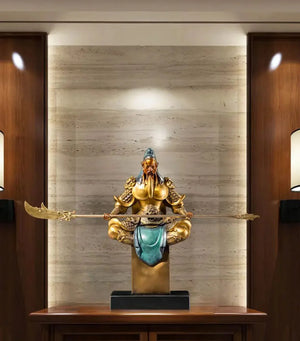
。
# Chinese Copper Ornaments: A Timeless Artistic Heritage
## The Rich History of Chinese Copper Decorations
For thousands of years, Chinese artisans have been crafting exquisite copper ornaments that reflect the nation’s profound cultural heritage. These decorations, ranging from intricate household items to magnificent architectural elements, showcase the remarkable skills passed down through generations of Chinese craftsmen.
The art of copper decoration in China dates back to the Shang Dynasty (1600-1046 BCE), when bronze (an alloy primarily of copper) was first used to create ritual vessels and ceremonial objects. Over time, the techniques evolved, and pure copper decorations became prominent during later dynasties, particularly in the Ming (1368-1644) and Qing (1644-1912) periods.
## Traditional Techniques in Copper Ornamentation
Chinese copper decorations are renowned for their meticulous craftsmanship and distinctive techniques:
– Repoussé and chasing: Creating raised designs by hammering from the reverse side
– Engraving: Delicate carving of intricate patterns directly onto the metal surface
– Inlaying: Incorporating other metals or materials into the copper base
– Patination: Developing rich surface colors through controlled oxidation
These methods often require years of apprenticeship to master, with some techniques being closely guarded family secrets passed down through generations.
## Symbolism in Chinese Copper Art
Chinese copper ornaments are deeply symbolic, often incorporating motifs that represent:
– Longevity (cranes, peaches)
– Prosperity (coins, fish)
– Harmony (lotus flowers)
– Protection (mythical creatures like dragons and qilins)
The colors achieved through patination also carry meaning – red symbolizes joy and celebration, while green represents harmony with nature.
## Contemporary Applications
Today, Chinese copper decorations continue to adorn both traditional and modern spaces:
– Architectural elements (door handles, roof ornaments)
– Home decor (vases, wall hangings)
– Jewelry and personal accessories
– Religious and ceremonial objects
Contemporary artists are also finding innovative ways to incorporate traditional copper techniques into modern art installations, ensuring this ancient craft remains relevant in the 21st century.
## Preserving a Cultural Treasure
As China continues to modernize, efforts to preserve traditional copper decoration techniques have gained importance. Master craftsmen are being recognized as living national treasures, and apprenticeship programs help ensure these skills are not lost to time. Museums and cultural institutions worldwide now collect and display historical Chinese copper ornaments, celebrating their artistic and historical significance.
Keyword: Chinese copper decorations
From imperial palaces to humble homes, Chinese copper decorations have adorned lives for millennia. Their enduring beauty stands as a testament to China’s rich artistic traditions and the skill of its craftsmen. As both art and artifact, these copper ornaments continue to captivate collectors and art lovers around the globe.